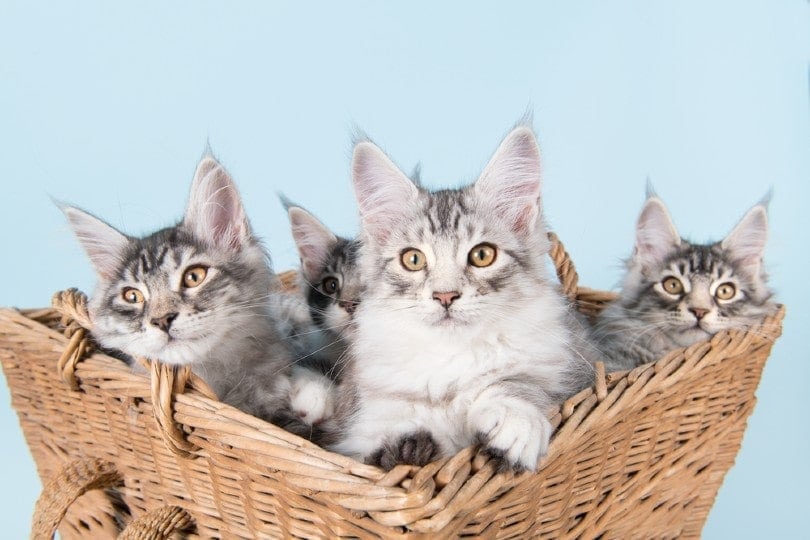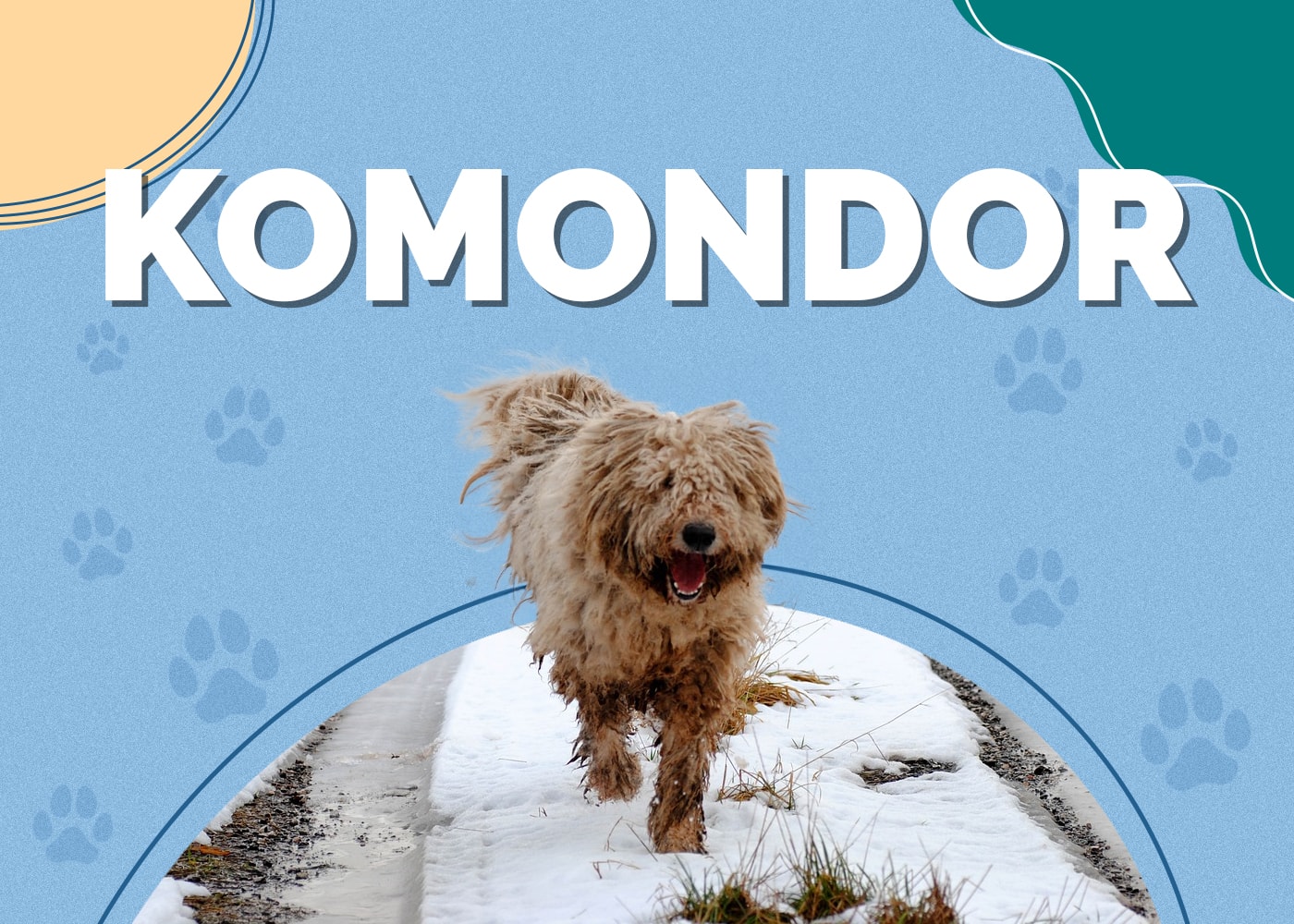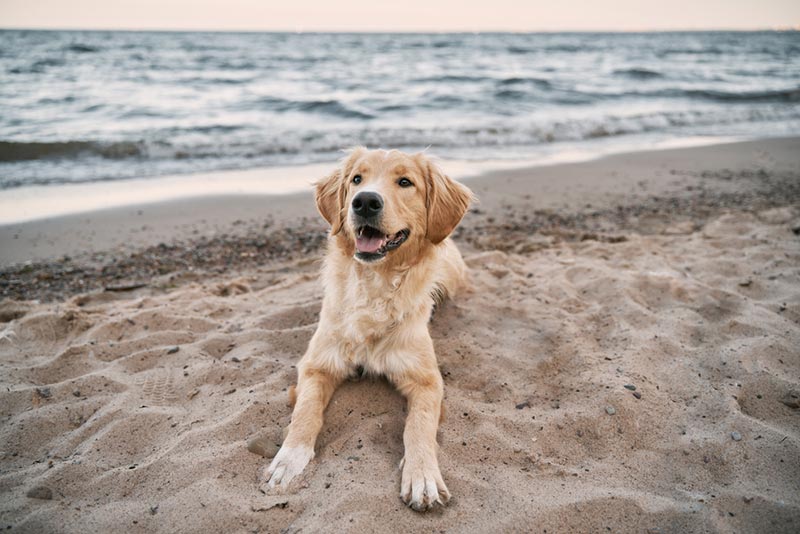16 Pitbull Colors & Coat Patterns (With Pictures)

Updated on
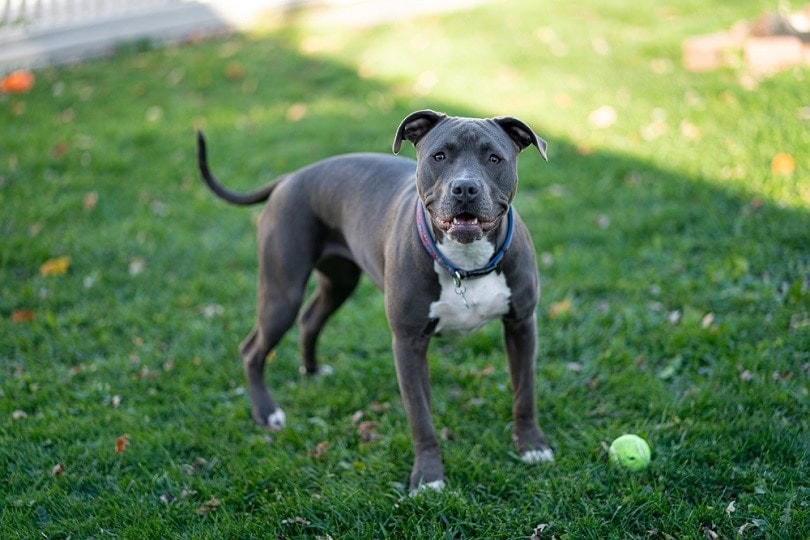
The Pitbull has been a popular dog in the United States for over 150 years. At the turn of the 20th century, pit bulls supported soldiers in World War I; they were also mascots for sports teams, and some even held movie roles. The Pitbull’s coat features different colors: black, white, fawn, red, brown, and many more shades. Depending on the animal, the color is not always structured. For example, some dogs sport a Red Nose, a Black Nose, or even a Blue Nose.
In fact, Pitbulls’ colors and coat patterns are as diverse as the rainbow. Here we present the 16 rarest and most beautiful colors and patterns of these adorable canine companions.
Top 16 Pitbull Colors & Coat Patterns
Here are the Pitbull’s main colors and patterns accepted by the major kennel clubs—American Kennel Club (AKC), Fédération Cynologique Internationale (FCI), and United Kennel Club:
1. Black Pitbull
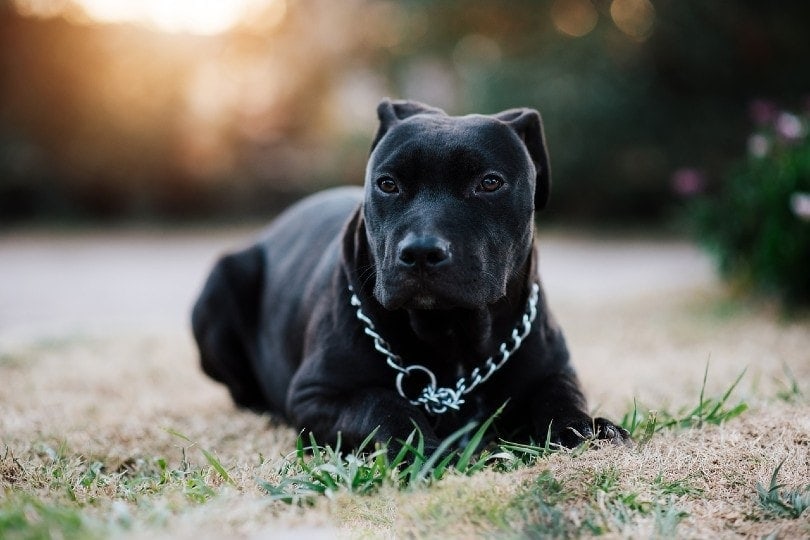
If you have ever come across a Black Pitbull, you have certainly been impressed by their fierce and impressive appearance! Indeed, these dogs make a strong first impression due to their almost mystical physique. As the name suggests, these dogs have an all-black coat, sometimes with a white mark on the chest and toes. They are often in great demand because of their prestigious appearance.
2. Black Brindle Pitbull
What is a brindle Pitbull? The term “brindle Pitbull” refers to a Pitbull whose coat is made up of several colors. Most of the time, the brindle Pitbull will have a coat made up of several shades of brown, tending to black and forming stripes similar to those of a tiger but darker. So, a black brindle pitbull will have a light base color with moiré patterns. It is possible that it also has some parts where its hair is white, often on the belly level.
Besides, brindle Pitbulls are relatively rare; finding them in dog shelters is quite an accomplishment. As a result, these dogs are generally more expensive than Pitbulls of other colors.
3. Red Pitbull
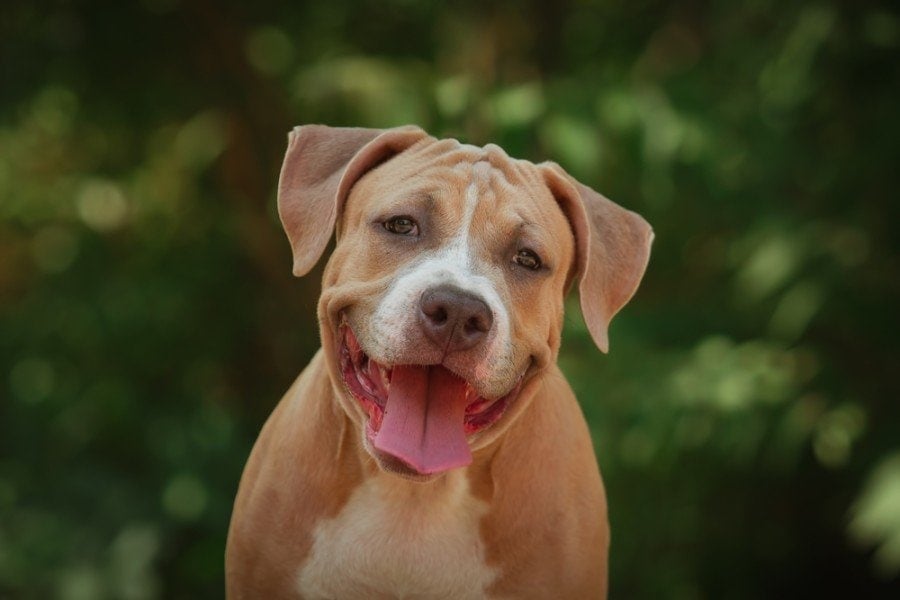
The Red Pitbull is not really red; its fur is just a tan-brown color. The Red Pitbull has nothing to do with the Red Nose Pitbull either since we are only talking about the color of its fur.
However, some people mistakenly believe that the Red Pitbull is rarer than others or that it is part of a particular breed; thus, they are willing to pay more for this type of Pitbull. In reality, the red Pitbull is exactly the same as the blue or black Pitbull; a Pitbull remains a Pitbull. So, paying more for a Red Pitbull is not justified, especially when you know that this type of Pitbull is fairly common.
4. Red Brindle Pitbull
Red brindle pit bulls are magnificent beasts: they have dark tiger stripes on a “red” colored coat. This coloring is not as uncommon as many breeders would have you believe—it is also found in boxers and greyhounds. The coat itself is short and stiff, so they don’t shed too much hair and therefore don’t need much grooming.
On the other hand, the dominant color in a brindle dog determines the name, followed by the term brindle. So, a red brindle Pitbull has red as its base color and then dark stripes that form the brindle pattern.
5. Blue Pitbull
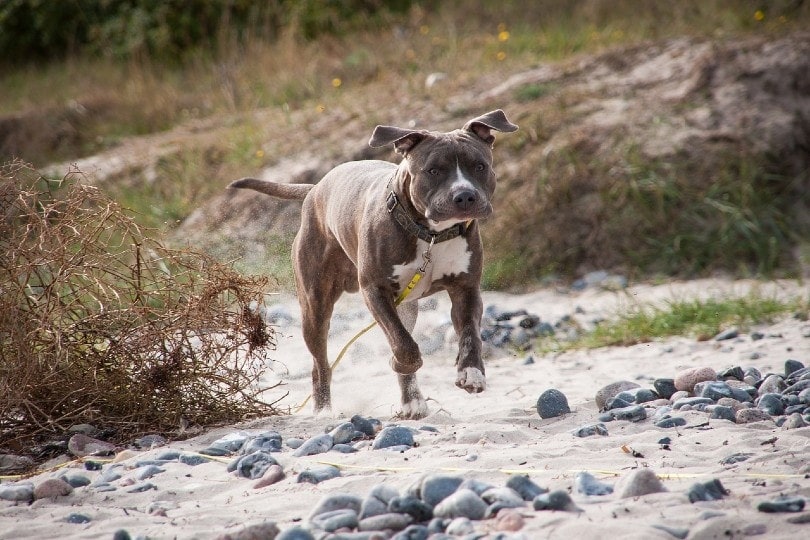
The Blue Pitbull is a type of Pitbull with a very dark blue color, ranging from silvery gray to dark charcoal. It is sometimes confused with the Black Pitbull because of their similarities in hair color.
Some may think that the color of the Pitbull differs from breed to breed and that the Blue Pitbull and the Red Pitbull are two separate breeds, for example. This is simply not the case. Indeed, the Black Pitbull, the Red Pitbull, and the Blue Pitbull are precisely the same dogs, and there is no physiological or behavioral distinction between these dogs, except for variations in color due to a recessive gene.
In addition, the Blue Pitbull is often considered one of the rarest Pitbulls; this is why they are often in great demand by potential buyers. However, so many dogs are available, especially for adoption, that this relative rarity is more or less erased.
6. Blue Brindle Pitbull
Blue brindle pit bulls have a blue stripe pattern on a light-colored base coat. Some have white spots, especially on their stomachs.
7. Blue Fawn Pitbull
Blue Fawn Pitbulls are absolutely gorgeous, with their light blue coat with a silver dominance and reddish or bluish noses. On the other hand, if you want to adopt one of these magnificent specimens, be prepared to have to take out your pennies: they are known to be expensive due to their relative rarity.
They are nonetheless a good investment as they make loyal, intelligent, and confident dogs perfect for families.
8. Blue Fawn Brindle Pitbull
The Blue Fawn Brindle Pitbull is even more expensive than the previous color variation due to its beautiful combination of colors and patterns. This type of Pitbull has silvery-blue stripes mixed with fawn between each of them.
9. Fawn Pitbull
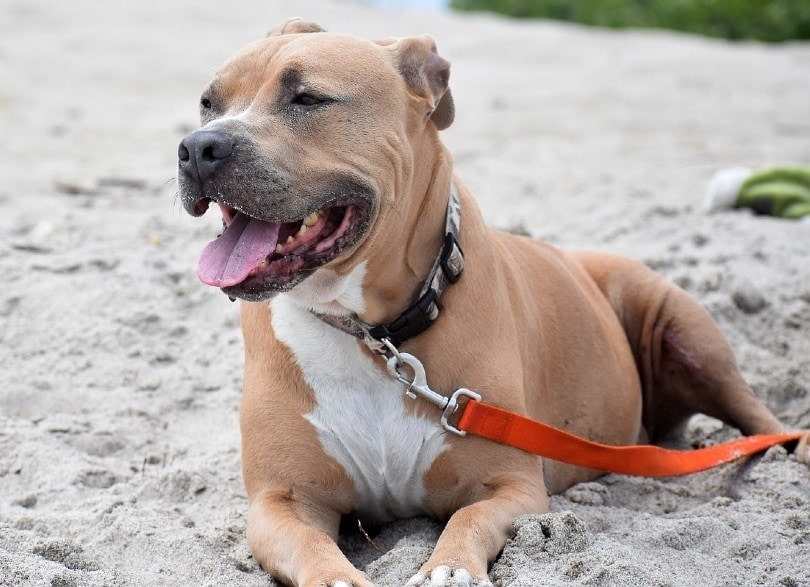
The Fawn Pitbull has a coat color that varies from orange to yellow-ocher, through to mahogany red. Some Fawn Pitbull also present white markings on their belly.
10. Fawn Sable Pitbull
Fawn Sable Pitbulls are rarer versions of Fawn Pitbulls. They have a coat color between yellow and tan, with black tips on the hairs.
11. Fawn Brindle Pitbull
Fawn Brindle Pitbulls have a cream-colored coat with tawny stripes.
12. Tan Pitbull
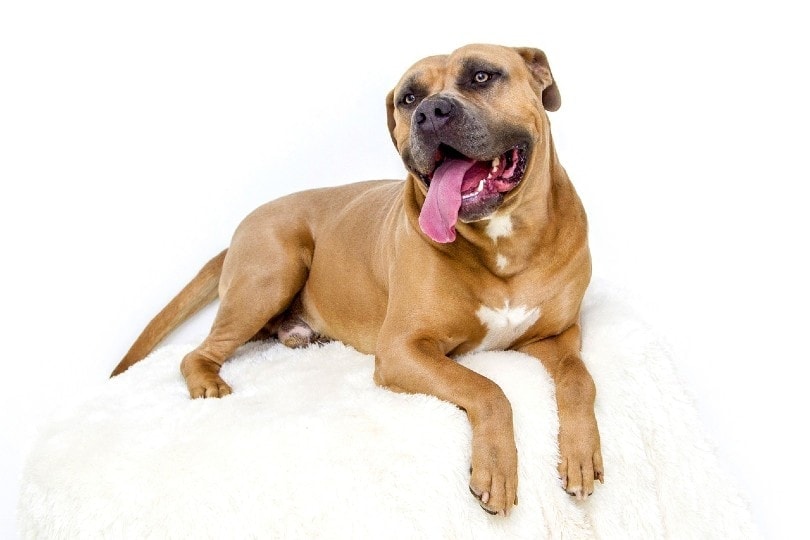
Tan Pitbulls have a coat color that varies between fawn and light brown. Some of these Pitbulls also have white markings on their bellies.
13. Buckskin Pitbull
A Buckskin Pitbull has a coat color reminiscent of the Fawn Pitbull; on the other hand, the fawn Pitbull has reddish tones in its coat, while the Buckskin Pitbull has more yellowish tones.
14. Seal Pitbull
The Pitbull Seal has a coat that appears almost black at first glance. However, you will notice the chocolate or even silver hue of their beautiful fur in bright light. In addition, their tail and legs are often darker than the central part of their coat.
15. Reverse Brindle Pitbull
In a normal brindle Pitbull, the lighter color is more dominant than the darker color. In the case of an inverted Brindle Pitbull, the darker color is dominant. It will also feature tan or tan-colored stripes.
16. Tricolor Pitbull
Tricolor Pitbulls have a combination of three coat colors: white, black, or tan. But they can have other color combinations, like blue, white, and tan, among others.
Good to Know: Is the Pitbull an Official Breed?
This simple question causes some confusion! Does the Pitbull represent a unique breed, or is it a concept created from scratch?
In fact, we often speak, wrongly, about the Pitbull breed. Instead, the term defines four breeds of dogs from different lineages: the American Pit Bull Terrier, the American Bully, the American Staffordshire Terrier, and the Staffordshire Bull Terrier. According to historians, the former was used in dogfighting in the 19th century, while the other three were instead bred for dog shows. Only the last two are considered pure breeds by the major North American dog clubs. Besides, not all countries recognize the Pitbull as a breed.
The name “Pitbull” is often the nickname given to the American Pitbull Terrier. More generally, it refers to dogs resulting from crosses which result in morphological resemblances to the American Pitbull Terrier.
Conclusion
Contrary to their reputation, the Pitbull is a caring, intelligent, and obedient dog. The aggressiveness he can show, like other dogs, is related to the way he has been trained and not to his character. In fact, the Pitbull is very affectionate and loves to be cuddled. He also needs a lot of physical exercises hence his dynamic behavior and attraction to playing with children. The multiple colors and patterns of its coat are just one of the many attractions that pit bulls have. So no matter what coat color you choose, you will earn a staunch and loyal companion!
Related Read:
Featured Image Credit: J.A. Dunbar, Shutterstock



